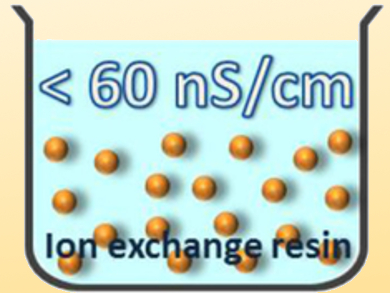Electrochemical measurements are generally carried out in an excess of electrolyte. This is required, particularly with macro-sized electrodes, to ensure that effects such as peak broadening caused by ohmic distortion are minimized. Micron-scale electrodes can be used to allow experiments in less conductive media. However, so far the majority of such studies have been carried out only in organic solvents.
Richard Compton, Oxford University, UK, and colleagues study electrochemistry in low ionic strength aqueous media. They found that CO2 dissolution in water has a large impact on its conductivity. Within tens of seconds after leaving a water purifier, the conductivity will increase substantially due to CO2 absorption from the atmosphere. The researchers removed the CO2 using ion exchange resin beads to prepare aqueous media with very low conductivity.
The ultra-low conductivity water can then be used in electrochemical experiments. This allows a wider potential window to be studied. The team performed a set of experiments involving oxidations of platinum, ferrocenemethanol, and molecular hydrogen to demonstrate the feasibility of voltammetry in the near absence of an electrolyte. The method could provide a platform for fundamental studies on, e.g., electrical double layer structure, conductivity mechanisms, water behavior at interfaces.
- Aqueous Voltammetry in the Near Absence of Electrolyte,
Xiuting Li, Christopher Batchelor-McAuley, Eduardo Laborda, Richard G. Compton,
Chem. Eur. J. 2017.
DOI: 10.1002/chem.201703525



